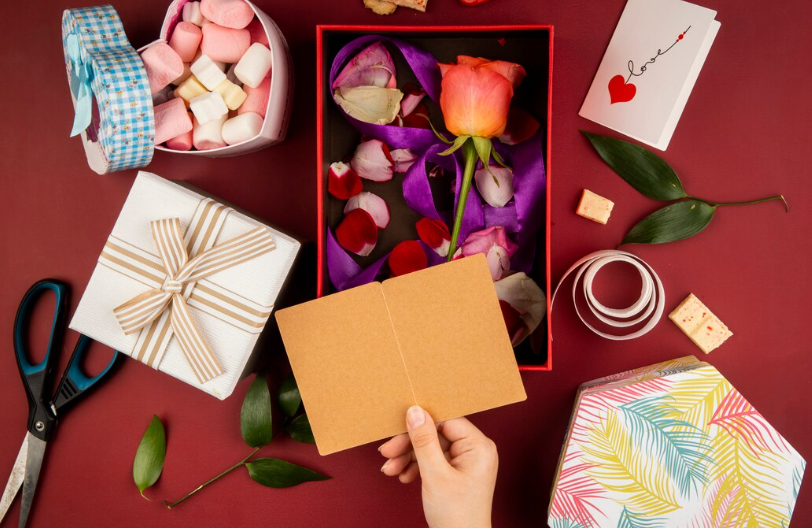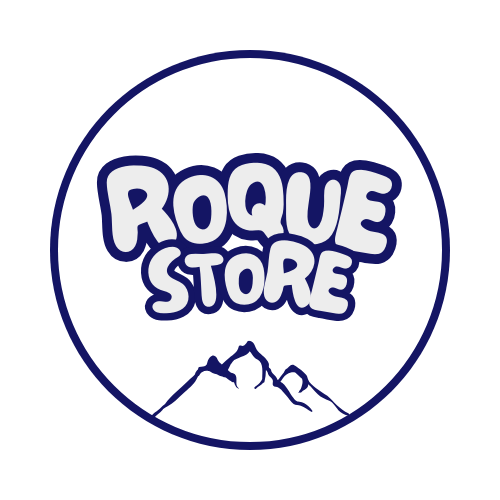
Gifts that Speak for Themselves: The Power of Personalized Details
Share
Gifts That Speak for Themselves: The Power of Personalized Details
In a world filled with mass-produced gifts, the gift that truly resonates is one that carries a whisper of the recipient's story. Personalization transforms a simple present into a keepsake, a sign of thoughtfulness, and a lasting reminder that someone saw you: your quirks, your passions, your journey. This article explores why personalized gifts matter, how to select them with intention, and practical ideas for different budgets and occasions. We'll also delve into the psychology behind personalization, the art of storytelling through gift-giving, and the ethical considerations that ensure personalized gifts feel meaningful and not mere gimmicks.
Introduction: Why Personalization Matters
- The universal desire to feel seen : Humans crave recognition and connection. A gift that reflects the recipient's identity indicates attention, care, and empathy.
- From transaction to transformation : Personalization turns a generic item into a catalyst for memory and identity.
- The science behind personalization : Cognitive and social psychology suggests that tailored cues activate neural reward pathways, reinforcing positive associations with the gift giver.
The Psychology of Personalized Gifts
1. Attention and Intentionality
Personalized gifts communicate intentionality. They say, "I took the time to think about you, what matters to you, what makes you unique." This perceived effort strengthens social bonds and trust.
2. Narrative Construction
A personalized object becomes a narrative artifact. It carries a story—shared memories, inside jokes, milestones—that the recipient can revisit, retell, and incorporate into their self-concept.
3. The Act of Gifting as Communication
Giving is a language. The choice of personalization—engraving, monograms, custom designs—translates into messages of affection, appreciation, and solidarity.
4. Memory Anchors
Personalized gifts often become keepsakes that anchor major life events (graduations, weddings, new jobs). They're tangible reminders of support during transitions.
Practical Principles for Choosing Personalized Gifts
1. Know the Identity of the Person
- Interests: hobbies, sports, books, music.
- Values: sustainability, craftsmanship, community.
- Milestones: upcoming birthdays, anniversaries, new beginnings.
- Aesthetics: minimalist, maximalist, vintage, contemporary.
2. Consider Practicality and Longevity
- Will the recipient use it regularly or will it be a sentimental keepsake?
- Is it lasting and decidedly personal, or might it feel like a gimmick?
3. The Right Kind of Personalization
- Subtle vs. bold: monograms, dates, or favorite phrases.
- Functional customization: engraved tools, personalized planners, or custom jewelry.
- Story-based personalization: Items that reference a shared memory or inside joke without being cryptic.
4. Balance between Uniqueness and Usability
- A truly unique but impractical item can feel like a burden.
- A very practical item with a personal touch usually works well, especially for everyday use.
5. Budget and Logistics
- Personalization often involves additional time and cost. Keep in mind lead times for engraving, handcrafting, or custom orders.
- Check return policies for personalized items, as some stores may have different requirements.
Personalized Gift Categories (With Examples)
A. Clothing and Accessories
- Personalized jewelry with initials, significant dates or coordinates.
- Monogrammed leather goods (wallets, passport covers).
- Personalized sneakers or clothing with a nickname or shared motif.
- A bracelet or ring engraved with a meaningful phrase.
B. Home and Life
- Custom-made blankets with family crest or location coordinates.
- Custom wall art or framed photos arranged in a narrative sequence.
- Engraved cutting boards, trays, or kitchen utensils.
- Personalized candles with an aromatic profile and a message.
C. Stationery and Planning
- Notebooks with the recipient's name and a favorite quote.
- Personalized planners designed according to your routines and goals.
- Personalized calendars with important dates and photos.
- Hand-stamped or embossed wax seals for a tactile touch.
D. Technology and Gadgets
- Custom phone cases, laptop cases, or smartwatch straps.
- USB flash drives or power banks with recorded messages.
- Printed playlists or units with curated content.
E. Experience-Based Personalization
- Tailor-made experiences: a guided tour, private lesson, or cooking course tailored to your interests.
- “A day in the life” albums or scavenger hunts celebrating shared memories.
- Subscription boxes curated according to the recipient's palate or passions.
F. Sentimental Memories
- Legacy-style photo albums or keepsake boxes.
- Engraved spoons, compasses or keys as commemorative pieces.
- A bookmark with a personal dedication linked to a favorite book.
G. For Family and Friends
- Family tree canvases or engraved frames.
- Personalized games or puzzles with inside jokes or shared memories.
- Custom board or card games with nicknames or traditions.
How to Personalize Without Overdoing It
- Prioritize meaning over novelty: “Does this personalization deepen our story?”
- Use restraint: a well-chosen detail can outweigh several over-the-top elements.
- Ensure readability and durability: choose materials and fonts that will stand the test of time.
- Aligns with the recipient's values: sustainable materials, ethical sourcing, and artisan stories add depth.
Creating a Personalization Plan: A Step-by-Step Guide
- List the recipient's interests, values, and life stage.
- Brainstorm 5–7 personalization angles that align with your identity.
- Narrow down to 2–3 viable options based on practicality and timelines.
- Choose a detail that is meaningful but not overly cryptic.
- Include a brief note explaining the meaning of the personalization (if the recipient likes the context).
- Confirm customization details, proofs, and delivery times.
- Present the gift with a brief, sincere message that connects the gift with a memory or wish.
Ethical Considerations in Personalization
- Avoid clichés or stereotypes: personalize with specificity rather than generic symbols.
- Respect privacy: Avoid overly revealing details; consider the recipient's comfort with public display.
- Ethically sourced: Support artisans and brands with transparent labor practices and sustainable materials.
- Preserve authenticity: Make sure the personalization truly reflects the recipient, not an idealized image of the gift-giver.
True Stories: Personalization That Transformed the Art of Gift Giving
- Story 1: A grandmother carves a family recipe into a wooden spoon, passing on tradition and warmth to a granddaughter who loves to cook.
- Story 2: A long-distance girlfriend creates a custom playlist and date night kit with the coordinates of their first day together, turning separation into anticipation.
- Story 3: A recent graduate receives a leather-bound planner with his initials and a short note from his mentors—an everyday tool that symbolizes confidence in his future.
(If you wish, I can weave in several short, anonymous anecdotes here to illustrate different personalization strategies.)
Budget-Friendly Ideas That Feel Like Luxury
- DIY touches: hand-stamped letters, pressed flowers, or handwritten notes accompanied by a practical item.
- Digital personalization: personalized playlists, photo books, or video messages.
- Local artisans: Commission small batches of custom products to support creators in your community.
- Upcycling with taste: transforming a meaningful object into a renewed and personalized one (for example, refurbishing a favorite mug with new enamel and a name).
Personalization by Season and Occasion
Birthday
- Focus on the person's evolving interests and milestones to celebrate.
- Consider a detail that marks time (date, coordinates of a memorable trip).
Weddings and Anniversaries
- Celebrate shared memories: a keepsake that encapsulates the couple's journey or a new tradition to begin.
Graduations
- Emphasize future potential: planners, tool kits, or items that chart your new path.
Festivities
- Combine practicality and sentiment: a warm blanket with a family motto or a kitchen set with a personalized recipe.
Personal Milestone Celebrations
- Mother's/Father's Day: Heirloom-quality pieces linked to family heritage.
- Amistiversaries: a detail that alludes to inside jokes and shared experiences.
How to Present a Personalized Gift
- Careful presentation: packaging that reflects personalization (for example, a note explaining the choice).
- Documentation: a card that tells the story behind the detail.
- Moment: Reveal personalization at the right moment to maximize emotional impact.
Common Mistakes to Avoid
- Overpersonalizing: Too many details can feel forced or invasive.
- Choosing generic personalizations without meaning (e.g., a cliché symbol with no connection to the recipient).
- Communicate little meaning: A brief note can help understand the intention behind the detail.
- Not considering practicality: A beautiful but unusable object loses its impact over time.
Conclusion: The Subtle Power of Thoughtful Personalization
Personalized gifts aren't about price or the novelty of personalization; they're about the message you send with your choice. They say, "I see you. Your passions, your journey, your story matter to me." In a fast-paced consumer culture, these gifts become anchors: reminders of love, friendship, and the shared moments that define a relationship. The true magic of personalization lies in the emotional resonance that lasts long after the wrapping paper has been recycled.
If you'd like, I can tailor this draft to a specific audience, tone, or niche (e.g., wedding gift guides, corporate gifts, eco-friendly customization, or a blog focused on SEO keyword commerce). I can also expand sections into more detailed subsections or add checklists, case studies, or a downloadable quick-start guide for readers.
Photo by
Freepik
